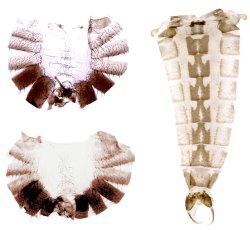
John Yoder
Associate Professor
Director of MA Program
- jhyoder@ua.edu
- (205) 348-1814
- 2336 Science and Engineering Complex (SEC)
- Website
- Not Accepting Students
Education
- Postdoctoral research: University of Wisconsin
- PhD, Molecular, Cellular and Developmental Biology, University of Colorado, 2003
Research Interests
Our lab studies the genetic basis of evolutionary novelty. That is, what is the molecular nature of the origin of innovative traits?
The field of Developmental Genetics explores the processes that govern organismal shape, form and function. This work has shown that while the spectrum of animals exhibits widely varied morphology, there is an amazing conservation of the core genetic machinery that sculpts this menagerie of form. Therefore, many of the differences in animal body plans cannot be explained by the evolution of new genes and new protein function. How then do novel traits evolve?
Work in field of Evolutionary Developmental Biology has found several examples of unique morphologies evolving as a result of changes in the expression patterns of key developmental genes (many of them transcription factors), or the downstream target genes that they regulate. Thus, evolution in cis has been proposed to play a major role in the generation of novel body plans.

We use the fruit fly Drosophila melanogaster as a model system to explore morphological evolution. Drosophila is a highly derived Dipteran insect with many novel character traits. We study the morphology of the fly abdomen. Compared to more basal diptera, like the mosquito Anopheles gambiae, the Drosophila abdomen is significantly reduced; the male abdomen has just six segments, while the abdomen of Anopheles males is composed of eight. Our goal is to understand how this derived morphology evolved in the lineage that gave rise to Drosophila.
The posterior abdomen is under the developmental regulation of a deeply conserved transcription factor, the homeotic protein Abdominal-B (ABD-B). However, we have shown that the expression of ABD-B is the same in mosquitoes and fruit flies. We are currently testing the hypothesis that modification to the expression of genes regulated by ABD-B resulted in a unique genetic cascade that reduces the most posterior segments during development. Unfortunately, few ABD-B targets genes are known – and none of the known targets contribute to abdominal morphology. We are employing a candidate gene approach to identify potential ABD-B targets. Once these genes (or gene) have been identified, our goal will be to investigate the molecular changes that occurred in the regulatory DNA sequences that control their expression.
Selected Publications
- Wang, W., Tindell, N., Yan, S. and Yoder, J. H. (2013). Homeotic functions of the Teashirt transcription factor during adult Drosophila development. Biol Open 2, 18–29.
- Yoder, J. H. (2012). Abdominal segment reduction: Development and evolution of a deeply fixed trait. Fly (Austin) 6, 240–245.
- Wang, W. and Yoder, J. H. (2012). Hox-mediated regulation of doublesex sculpts sex-specific abdomen morphology in Drosophila. Dev. Dyn. 241, 1076–1090.
- Wang, W. and Yoder, J. H. (2011). Drosophila pupal abdomen immunohistochemistry. J Vis Exp e3139.
- Wang, W., Kidd, B. J., Carroll, S. B. and Yoder, J. H. (2011). Sexually dimorphic regulation of the Wingless morphogen controls sex-specific segment number in Drosophila. Proceedings of the National Academy of Sciences 108, 11139–11144.